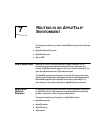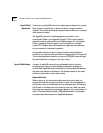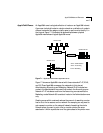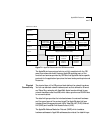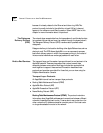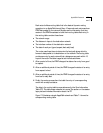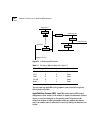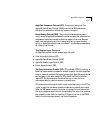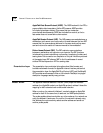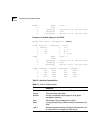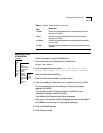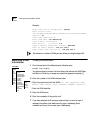
AppleTalk Protocols 7-9
AppleTalk Transaction Protocol (ATP). This protocol, along with the
AppleTalk Data Stream Protocol (ADSP), ensures that DDP packets are
delivered to a destination without any losses or corruption.
Name Binding Protocol (NBP). This protocol translates alphanumeric
entity names to AppleTalk addresses. It maintains a table that references the
addresses of nodes and named entities that reside in that node. Because
each node maintains its own list of named entities, the names directory
within an AppleTalk network is not centralized. It is a distributed database of
all nodes on the internet.
The Session Layer Protocols
An AppleTalk internet has four session-layer protocols:
■ Zone Information Protocol (ZIP)
■ AppleTalk Data Stream Protocol (ADSP)
■ AppleTalk Session Layer Protocol (ASP)
■ Printer Access Protocol (PAP)
The Zone Information Protocol (ZIP). ZIP works with RTMP to maintain a
table that maps network numbers to network zones for the entire AppleTalk
internet. Network zones are the logical groupings of AppleTalk networks. As
we have seen it, the table created by ZIP is called the Zone Information
Table (ZIT). The Administration Console allows you to view the zone
information table by network number or network zone.
ZIP creates a zone information table in each router. Each entry in the ZIT is a
“tuple,” or pair, that includes a network number and a network zone name.
When an NBP packet arrives at the router, it includes the zone name which
the router compares with entries in the zone table. The router then matches
the network number from the matching ZIT tuple to the one in the RTMP
table to find the interface where it can route the packets.



